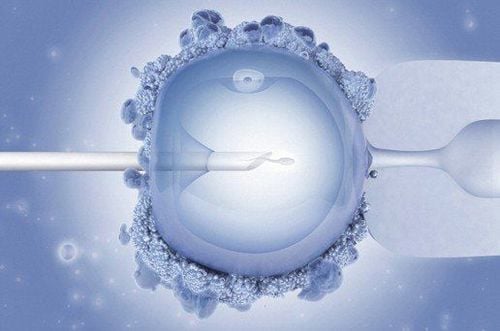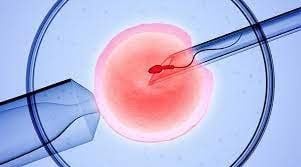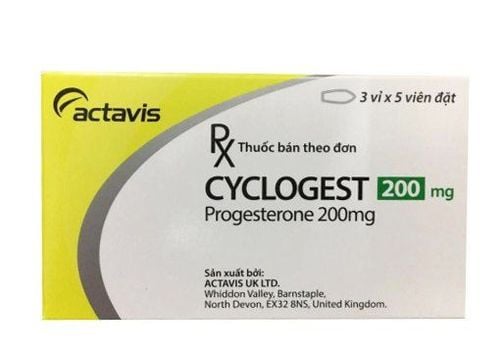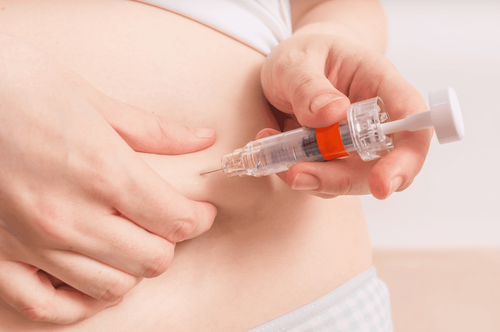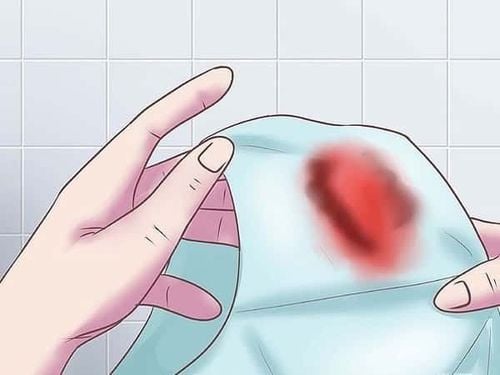This is an automatically translated article.
In vitro fertilization is a treatment for infertility. This method is only available at some major hospitals across the country, including Vinmec Hospital. Although many people know the phrase "in vitro fertilization", not everyone knows how the in vitro fertilization process works.
1. How is in vitro fertilization?
In vitro fertilization is where the wife's eggs are fertilized with the husband's sperm in a test tube, which means that fertilization takes place outside the woman's body. Then, when the embryo has formed and developed, it will be inserted into the woman's uterus for the embryo to implant and develop normally.
IVF is a commonly used method of treatment for infertility. The success rate of this method depends on the age of the couple and the cause of the infertility.
The actual process takes place through the following main steps:
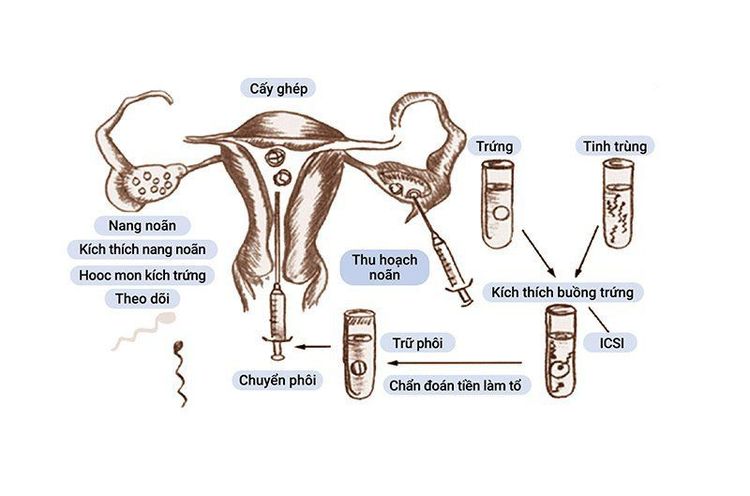
Quy trình thụ tinh trong ống nghiệm
Step 1: Physical examination, evaluate the reproductive health of both husband and wife
The wife needs to do the following tests:
Endocrine test: quantify sex hormone levels (estrogen, progesterone,... ) gonadal hormones (LH, FSH). This test aims to evaluate the functioning of the hypothalamic-pituitary-ovarian axis and the ovarian reserve of the wife (AMH, FSH, LS). Sexually transmitted disease testing: the wife will have blood drawn for tests to check for sexually transmitted diseases such as syphilis, HIV, hepatitis B and vaginal discharge for Chlamydia. ,... Gynecological ultrasound: Gynecological ultrasound aims to detect gynecological abnormalities if any such as ovarian cysts, uterine fibroids and congenital abnormalities of female genital tract or ovaries. polycystic, ... At the same time, through ultrasound, the doctor will conduct a basic follicle count on the two ovaries on the first day of the menstrual cycle. The husband needs to do the following tests:
Semen analysis: this test is to check the quality of the husband's semen, to assess the number of sperms more or less, whether the sperm has good motility or not. whether the infection is abnormal or not. In case the husband does not have sperm, it will have to conduct other specialized tests such as sex hormone test, testicular ultrasound,...
Other tests: the husband also has blood taken for blood test. Get tested for sexually transmitted diseases such as HIV, hepatitis B, syphilis,... Step 2: Ovarian stimulation
The doctor will administer ovarian stimulation injections for you. wife continuously for 9-11 days.
During the injection process, the wife needs to go to the hospital for ultrasound and blood tests according to the doctor's appointment to monitor the growth of the follicles and adjust the medication based on the body's response to the drug. . Because each person's response to medication is different, it is not the same for everyone.
When the follicle has grown to a standard size, the doctor will administer the last injection to stimulate the egg to mature, this injection is called an ovulation trigger. Ovulation stimulants need to be injected on time.
Step 3: Aspirate eggs and collect sperm
After injecting ovulation stimulation 36-40 hours, the wife needs to fast for breakfast, go to the hospital for doctors to conduct egg retrieval. The wife will be anesthetized before the procedure, so she won't feel any pain. After egg retrieval, the wife needs to stay in the hospital to monitor her health for 2-3 hours.
Doctors conduct examination, separate eggs and cyst fluid under a microscope.
At the same time, the husband will conduct sperm collection to prepare for fertilization in one of two ways:
Routine insemination (IVF). Intracytoplasmic sperm injection (ICSI).
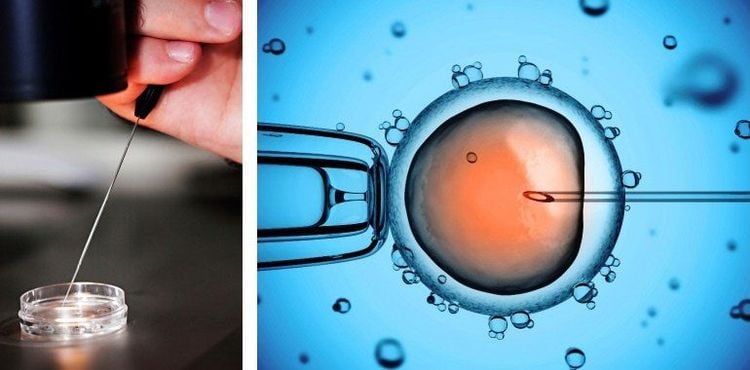
Tiêm tinh trùng trực tiếp vào trong bào tương noãn (ICSI)
Step 4: In vitro fertilization
After egg aspiration and sperm count, eggs and sperm will be transferred to the Labo for in vitro fertilization and embryo creation. Normally, embryos will be cultured outside for 2 to 5 days before being transferred into the wife's uterus.
The process of IVF can get many embryos, the number of qualified embryos will be transferred into the wife's uterus, this case is called fresh embryo transfer. The remaining embryos will be frozen and can be used in the next embryo transfer.
However, there are also many cases where, for personal or professional reasons, all the collected embryos will be frozen. During this time, the doctor will give the wife oral and vaginal medications to prepare for the embryo transfer.
Step 5: Transfer embryos into the wife's uterus
After fertilization is complete, the doctor will inform the couple about the quantity and quality of embryos formed. After that, the doctor will agree with the couple on the number of embryos to be transferred to the uterus and the remaining embryos that can be frozen.
Normally, embryos will be transferred 2 - 5 days after egg retrieval. The doctor will carry out embryo transfer when the uterine lining is thick enough, of good quality, favorable for the development of the embryo after being placed in the uterine cavity.
In the case of frozen embryo transfer, the wife will be given medication and ultrasound to monitor the lining of the uterus for 14-18 days starting from the 2nd day of the next menstrual cycle. The doctor will choose the right day to transfer the frozen embryos into the wife's uterus.
Step 6: Pregnancy test after embryo transfer
Two weeks after embryo transfer, the wife will go to the hospital for a blood test to check beta HCG levels. If at this time the beta HCG level is > 25 IU/l, then pregnancy (implanted embryo implantation). However, this concentration depends on the body of each person and the number of embryos implanted.
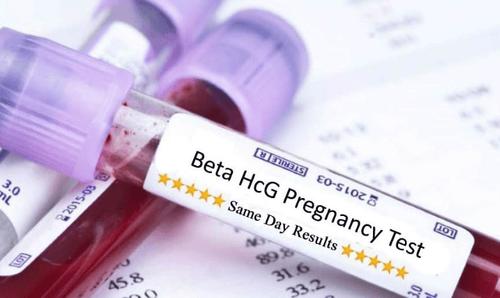
Xét nghiệm beta HcG - thử thai sau khi chuyển phôi
After 2 days need to do the test again to evaluate the results:
If after 2 days, the beta HCG level increases by 1.5 times or more, the fetus is developing. After that, the mother needs to continue using the pregnancy medication and go to the ultrasound according to the appointment to determine the gestational sac and the fetal heart. If, after 2 days, beta HCG levels do not increase or decrease, further monitoring is required. When the beta HCG level returns negative (less than 5 UI/l), a miscarriage will occur. In this case, if there are still frozen embryos, the wife can use the frozen embryos to transfer to the uterus in the next cycles without repeating the previous steps.
Step 7: Fetal monitoring
After determining that the embryo has developed into a fetus, pregnant women need ultrasound and periodic antenatal check-ups according to the doctor's appointment to check the development status of the fetus until the day of delivery.
2. IVF process at Vinmec
In vitro fertilization at Vinmec is also done according to the above steps, the specific process is as follows:
Infertile couples will be screened. The doctor will make an appointment for IVF, make a record of IVF, and then ask the leader to approve the profile and treatment protocol. The wife will have an ultrasound, do a test on the 2nd day of the menstrual cycle, and start taking ovarian stimulation drugs. The wife is injected with hormone drugs to stimulate eggs for 9-12 days. The doctor will inject drugs to induce ovulation 36-40 hours before oocyte retrieval. Conduct oocyte aspiration, ICSI, embryo culture. Embryo transfer into the wife's uterus on day 3 - day 5. After the embryo transfer 14 days will take a pregnancy test. After 28 days of embryo transfer, ultrasound was performed.
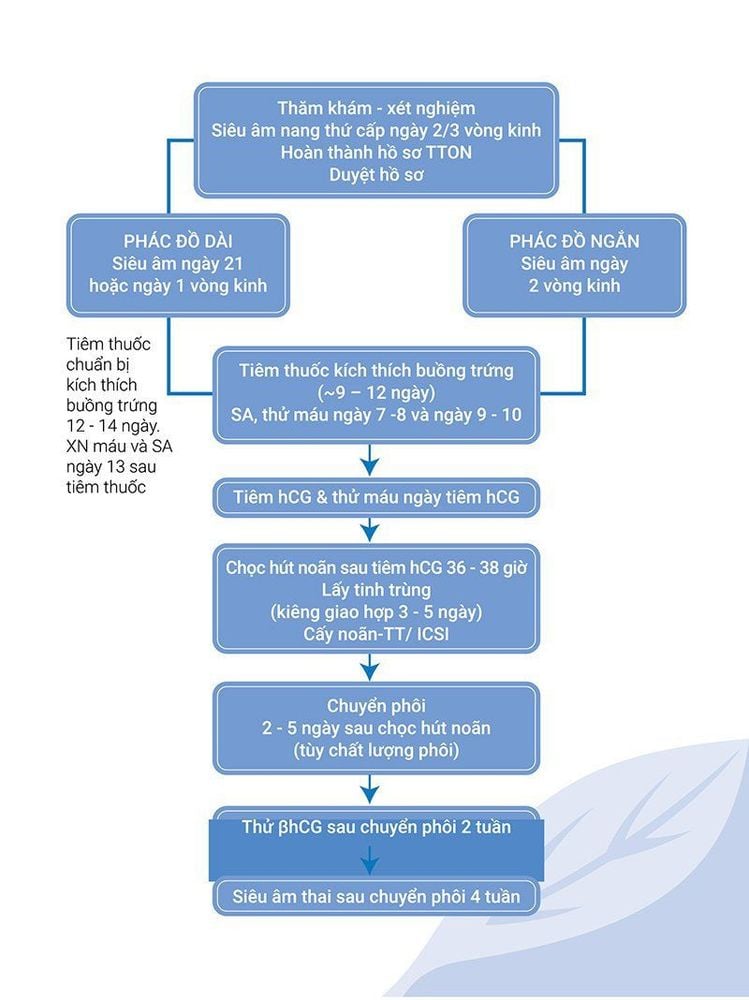
Quy trình thụ tinh ống nghiệm tại Vinmec
Established in November 2014, up to now, Vinmec IVF fertility center has performed fertility support for over 1000 infertile couples with a success rate of over 40%. This rate is equivalent to developed countries such as UK, USA, Australia,...
Please dial HOTLINE for more information or register for an appointment HERE. Download MyVinmec app to make appointments faster and to manage your bookings easily.




